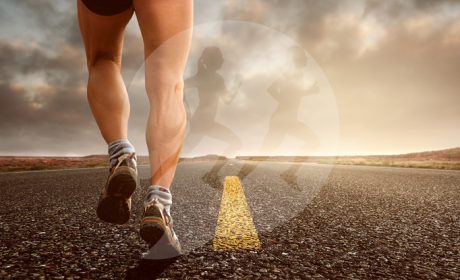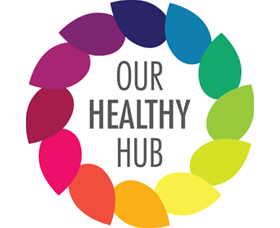Summer is in full swing in the UK and it’s proving to be a bit of a mixed bag, weather-wise. Many people keen to stay healthy – or get healthy for the first time in a while – take summer as an opportunity to get out running. This is definitely a good idea and I wouldn’t want any cautionary tales to discourage people from exercise. However, there are several things that can go wrong if you don’t take special care of yourself when out running; this guide will cover most of the issues, telling you how to keep yourself safe and healthy when you start running again this summer.
Pace Yourself
When people get back into running again after several months (or years) away, their enthusiasm can potentially make things worse by pushing them further than their bodies are ready for. It takes a while for your muscles, tendons, and ligaments to toughen up to the strain and impact of running. Overdoing it early on can cause temporary as well as lasting damage. One very common injury for runners is Iliotibial Band Syndrome (also known as IT band syndrome or ITBS). It occurs when the long ligament from your hip to your shin is overused, becoming inflamed or tight. As the IT band is attached to your knee and usually helps stabilise it, this injury results in small-to-significant knee pain. This can take months of physio to overcome if you push yourself too far.
The easy way to avoid an overuse injury is to not overuse your muscles or ligaments! It’s so important to pace yourself at the beginning of a running regime. You can start pushing the envelope later, once you’re in much better shape. Commit to smaller, manageable runs to begin with and give yourself permission to stop if you need to. The usual running advice is to only add 10% to your overall weekly mileage each time. This is pretty good advice later on down the line, but for beginners, it’s advisable to stick to the same weekly distance for three or four weeks before moving things up.
Make Time for Your Warm-up and Cool-down
It’s also very important to make time for your warm-up and for your cool-down. Warm-ups help raise your body temperature, stimulate your cardiovascular system, and increase blood circulation to your muscles. All of this will improve your performance and it will help reduce muscle pain and risk of injury because your muscles, tendons, and ligaments will all be more flexible and ready for the stress you’re going to put them through. To warm up, stretch out the muscles in your legs. Runner’s World has a brilliant runners’ guide to stretching that you can follow. Part of the warm-up is to take it easy for five minutes or so – perhaps just walking or jogging to give your legs a chance to get into gear.
Cool-downs are also an essential part of the process because they help your heart rate get back to normal more gradually than if you were to just stop suddenly. If your heart rate drops too fast you may feel dizzy or you even faint because a lot of blood often pools in your leg muscles during particularly strenuous exercise. The blood pools there because these muscles have been working the hardest and need the most oxygen. There may be lactic acid build-up, which can cause you a lot of pain later on. Walking slowly can help reduce lactic acid build-up, as can light stretching. A little bit of time and effort at the end of a run can save you a lot of pain later on.
Protect Yourself from The Sun
Even on overcast days, the Sun’s rays can reach you. That’s pretty much what we like about spring and summer. It makes the climate warmer, sometimes drier, and it’s a more pleasant environment to run in. However, whilst most wavelengths of the Sun’s light are harmless to you, its ultraviolet rays are a kind of radiation and they can damage your skin and your eyes after just a small amount of exposure. Given that most runs last between 15 and 60 minutes, this is a lot of time to be exposed to the sun without protection.
Too much sunlight can cause sunburn. This is when your skin is swollen, red, and painful. Sunburn, and exposure to sunlight over an extended period can also raise the likelihood of developing skin cancer. Whether your skin is naturally dark or not, it can still burn and it can still develop skin cancer. Always apply sun cream before you head out on a run. Choose a high SPF such as 30 or 50, depending on the weather and your skin type. Look out for sun cream that is water resistant, as this will help ensure you don’t sweat most of your sun cream off in the first ten minutes.
Make sure you cover your skin up with suitable sportswear too. Printsome is a T-shirt printing agency based in London. In case you’re after custom sportswear, indulge yourself in some awesome customer service. They deliver all across the UK!
Too much sunlight can also do a lot of damage to your eyes. UV radiation can cause cataracts (clouding of your lenses), pinguecula (benign lumps on your sclera), macular degeneration (the gradual degradation of vision usually attributed to old age), and several other conditions. Your eyes are very delicate pieces of machinery and they need to be protected from prolonged sunlight exposure. The best way to do this is to buy specialist sports sunglasses or glasses. Whether they have a shade filter or not, all good glasses and sunglasses will provide total UV protection. And choosing a sports model will ensure that the frame hugs your face tight and doesn’t wobble up and down as you run. If you’re worried about cost, it’s a good idea to shop online, as online stores offer discounts high-street stores just can’t match. This goes double if you need prescription glasses. Red Hot Sunglasses, for example, has a great range of prescription sunglasses, with numerous sports and running models to choose from, all at significantly lower prices than you’ll find on the high street.
(Tip: Make sure you find a pair of sunglasses that fit well and don’t move about, as runners sometimes cause themselves injuries by changing how they run to prevent their sunglasses jiggling on their face).
Stay Hydrated
It’s extremely important to stay hydrated as water helps regulate your temperature and transport nutrients around your body. And it also helps lubricate your joints. All of this is even more important when you’re running. However, it’s a bad idea to have too much liquid sloshing around in your belly whilst you’re running. To avoid this, try to drink more regularly. Starting up to three hours before your run have a glass of water beside you at all times. Then, about an hour before your run, drink a little less. If you’re running for a long period of time, then it’s important that you bring water with you so that you can drink whilst you’re out running. Look for water bottles that have been designed so that they’re easy for runners to hold. Again, shopping online should provide you with the most competitive prices. After your run, it’s important to keep on drinking.
There are other potential health risks when you head out running; this list is not exhaustive. However, I hope you’ve found it useful and that it helps you stay healthy whilst you’re out running. Good luck.

About Paul Stainthorpe
Running has been part of my life since 2011. While growing up I hated running and would do anything to avoid it at school. Give me a ball and a racket any day. It’s funny how some things change. I run for good. In 2012 I ran the 12 Days of Christmas for the Percy Hedley Foundation. In 2013 I attempted (with friend Lee Nyland), the 12 parkruns of Christmas for the Tiny Lives Trust.- 3 Careers For Fitness And Sports Enthusiasts - January 8, 2018
- 5 Essential Steps To Making The Most Of Your Weight Loss Holiday - November 6, 2017
- How To Stay Safe And Healthy When You’re Running - August 4, 2017
- How Quitting Smoking Will Improve Your Fitness Levels - May 4, 2017
- How Much Is Too Much? - April 26, 2017
- Jojoba Oil And Your Beard - March 24, 2017
- Top 10 Protein Power Breakfasts - March 21, 2017
- 4 Immune Boosting Porridge Toppings - February 2, 2017
- How To Fit A Healthy Lifestyle Into A Busy New Year - January 13, 2017
- Don’t Be Fooled By These 3 Weight Loss Myths - December 21, 2016



























I hear yea Paul, the weather this summer was a mix bag here in Toronto, Canada as well. It’s usually hot and dump but not this year. This summer was cold and rainy. I don’t mind the cold part, it was perfect for running. That was when it wasn’t raining. Great stuff in the article. Cheers, Vic
I’m just starting to job again so these tips come in just at the right time!
Danielle | FollowMyGut.com <3